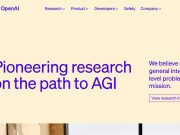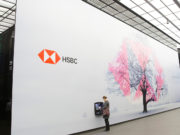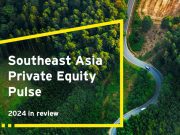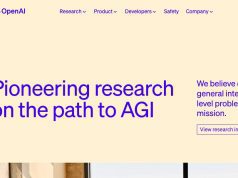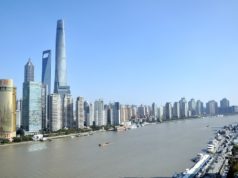BlackRock Global Family Office Report 2023: 120 Single Family Offices Average $2 Billion AUM, 20% with > $1 Billion Optimistic on Macro Outlook & 5% with Less than $500 Million are Optimistic
17th June 2023 | Hong Kong
BlackRock has released the Global Family Office Report 2023, providing key insights into family office investment outlook, portfolio allocation, fixed income & alternative investment preferences, and investment management process in the family office. The survey was conducted with 120 single family offices averaging $2 billion of AUM and total AUM of $243 billion (Assets under Management). 48% of the family offices are established before 2010, and 53% established after 2010. For global macro outlook, 13% of family offices are optimistic, 61% are pessimistic and 27% are neutral. Larger family offices are more optimistic on the macro outlook, 20% optimistic with > $1 billion, 7% are optimistic with $500 million to $999 million, and 5% are optimistic with less than $500 million. The Portfolio Asset Classes are 61% in Traditional, and 39% in Alternatives. The Portfolio Allocation is Listed Equities (37%), Fixed Income (14%), Cash & Cash Equivalent (10%), Illiquid Alternatives (30%), Liquid Alternatives (9%). The top 3 increase in fixed income allocation are Investment grade, Sovereign public credit debt, Private debt/credit. The top 4 Cash strategy are General pool (83%), Risk buffer (62%), Funding capital calls to Private equity managers (60%), Tactical portfolio adjustments (57%). The top 5 preferred alternative investment type are Private equity, Private equity funds, Net Real estate & infrastructure, Real estate, Private debt / credit. The top 3 Increase in alternative investment allocation are Infrastructure, Private credit, Private equity direct deals (ex. VC). The top 3 preferred investment structures for private credit are Primary funds (83%), Direct investment (33%), Secondaries (27%). The top 3 preferred investment structures for private equity are Primary funds (77%), Secondaries (50%), Co-investment (43%). The top 2 most compelling reasons to invest in private markets are High return potential (75%), Diversified & less-correlated sources of return (48%). For family office management process, the top 5 most confident on access to resources & expertise are Investment due diligence, 3rd-party manager due diligence, Succession planning, Reporting, Risk management. The top 5 in-house resources & expertise are Governance, Succession planning, Reporting, Technology, Investment strategy & asset allocation. The poll results were collected before banking sector disruption (November 2022 and January 2023). See below for key findings & summary | View report here
“ 120 Single Family Offices Average $2 Billion AUM, 20% with > $1 Billion Optimistic on Macro Outlook & 5% with Less than $500 Million are Optimistic “
BlackRock Global Family Office Report 2023

BlackRock has released the Global Family Office Report 2023, providing key insights into family office investment outlook, portfolio allocation, fixed income & alternative investment preferences, and investment management process in the family office.
Summary
- Family Office Profile – 120 single family offices averaging $2 billion of AUM & total $243 billion AUM
- Family Office established – 48% before 2010, 53% after 2010
- Global Outlook – Optimistic (13%), Pessimistic (61%), Neutral (27%)
- Optimistic Outlook by AUM – 20% Optimistic with > $1 billion, 7% with $500 million to $999 million, 5% with less than $500 million
- To Change investment strategy due to market environment – 46% Yes (2020: 23%)
- Top 3 Changes to Investment Strategy in 2023 – Positioning for higher inflation (62%), Positioning for rising rates (49%), Increasing idiosyncratic sources of return (45%)
- Major Challenges to achieve investment goals: Unsupportive short / medium-term market environment (58%), Access to high ideas, delays or solutions to execute strategy (46%), Sourcing talent (40%)
- Top 5 most confident on access to resources & expertise – Investment due diligence, 3rd-party manager due diligence, Succession planning, Reporting, Risk management
- Top 5 in-house resources & expertise – Governance, Succession planning, Reporting, Technology, Investment strategy & asset allocation
Summary – Portfolio & Investments
- Portfolio Asset Classes – 61% Traditional, 39% Alternatives
- Portfolio Allocation – Listed Equities (37%), Fixed Income (14%), Cash & Cash Equivalent (10%), Illiquid Alternatives (30%), Liquid Alternatives (9%)
- Top 3 increase in fixed income allocation – Investment grade, Sovereign public credit debt, Private debt/credit
- Top 4 Cash strategy – General pool (83%), Risk buffer (62%), Funding capital calls to Private equity managers (60%), Tactical portfolio adjustments (57%)
- Top 5 Preferred alternative investment type – Private equity, Private equity funds, Net Real estate & infrastructure, Real estate, Private debt / credit
- Top 2 Compelling reasons to invest in private markets – High return potential (75%), Diversified & less-correlated sources of return (48%)
- Top 3 Increase in alternative investment allocation – Infrastructure, Private credit, Private equity direct deals (ex. VC)
- Top 3 Preferred investment structures for private credit – Primary funds (83%), Direct investment (33%), Secondaries (27%)
- Top 3 Preferred investment structures for private equity – Primary funds (77%), Secondaries (50%), Co-investment (43%)
BlackRock Global Family Office Report 2023
1) Family Office Profile
- 120 single family offices
- Average $2 billion of AUM (Assets under Management)
- Total AUM of $243 billion
Family Office AUM:
- Below $500 million – 32%
- $500 million to $999 million – 23%
- More than $1 billion – 45%
Family Office by decade established:
- Before 2010 – 48%
- After 2010 – 53%
Family Office by Region:
- United States & Canada – 39%
- EMEA – 41%
- LATAM & APAC – 20%
EMEA ~ Europe, Middle East, and Africa
LATAM ~ Latin America
APAC ~ Asia-Pacific
2) Global Investment Outlook
Global Outlook:
- Optimistic – 13%
- Pessimistic – 61%
- Neutral – 27%
Global Outlook by AUM (< $500 million):
- Optimistic – 5%
- Pessimistic – 76%
- Neutral – 18%
Global Outlook by AUM ($500 million to $999 million):
- Optimistic – 7%
- Pessimistic – 71%
- Neutral – 21%
Global Outlook by AUM (> $1 billion):
- Optimistic – 20%
- Pessimistic – 44%
- Neutral – 35%
3) Investment Strategy & Views
To change investment strategy due to market environment:
- Yes – 46% (2020: 23%)
- No – 54% (2020: 77%)
Changes to Investment Strategy in 2023:
- Positioning for higher inflation – 62%
- Positioning for rising rates – 49%
- Increasing idiosyncratic sources of return – 45%
- Increasing geographic, sector or factor diversification – 44%
- Implementing a risk-on view – 29%
- Increasing fund liquidity – 24%
- Reducing drawdown risk – 18%
Investor views on market volatility:
- Long-term investor, less focused on near-term macro disruption – 90%
- Market volatility is opportunity for alpha, and to add high conviction areas for portfolio – 87%
Reactions to macro & market landscape:
- Review portfolio / positions more frequently – 76%
- Seeking more input from investment managers – 64%
- Seeking more input from family office peers – 61%
Major challenges or barriers to achieving investment goals:
- Unsupportive short / medium-term market environment – 58%
- Access to high ideas, delays or solutions to execute strategy – 46%
- Sourcing talent – 40%
- Access to quality of advice required – 32%
4) Portfolio Allocation:
Portfolio Asset Classes:
- Traditional Asset Classes – 61%
- Alternative Asset Classes – 39%
Portfolio Asset Classes (Traditional / Alternative):
- United States & Canada – 57% / 43%
- EMEA – 60% / 40%
- LATAM & APAC – 70% / 30%
Portfolio Allocation:
- Listed Equities – 37%
- Fixed Income – 14%
- Cash & Cash Equivalent – 10%
- Illiquid Alternatives – 30%
- Liquid Alternatives – 9%
5) Fixed Income Allocation
A) Investment grade:
- Increase – 73%
- Decrease – 3%
- No Change – 20%
- Not applicable – 5%
B) Sovereign public credit debt:
- Increase – 55%
- Decrease – 0%
- No Change – 28%
- Not applicable – 18%
C) Private debt/credit:
- Increase – 50%
- Decrease – 5%
- No Change – 25%
- Not applicable – 20%
D) Non-investment grade public credit:
- Increase – 30%
- Decrease – 13%
- No Change – 33%
- Not applicable – 25%
E) Securitized assets:
- Increase – 23%
- Decrease – 3%
- No Change – 18%
- Not applicable – 58%
F) Municipal & tax-exempt debt:
- Increase – 13%
- Decrease – 3%
- No Change – 25%
- Not applicable – 60%
Rick Rieder, Chief Investment Officer of Global Fixed Income & Head of Global Allocation Investment Team on Higher Yield:
- The S&P 500 earnings yield is on par with the yield of short-term investment grade fixed income assets for the first time in decades
- Investors can hit a near 6% yield target with a high-quality investment grade portfolio
- High-quality fixed income can become the dominant fixture of an attractive diversified portfolio
- Within fixed income markets, our highest conviction view is that the present environment of heightened volatility is best met by an active and unconstrained approach to investing – one that is not tethered to benchmark constraints, maturity limits or other biased risks
- By seeking maximum flexibility and leveraging a broad toolkit, portfolios can pivot nimbly across duration, regional and sector exposures in response to rapidly shifting conditions.
- favor high-quality liquid exposures in fixed income
- intermediate bonds are looking increasingly attractive as a portfolio hedge as the Fed reaches the latter stages of the hiking cycle
- high-quality global opportunities emerging including European sovereigns and emerging market local rates
- necessary to maintain some liquidity or “dry powder,” especially as new investment opportunities may emerge as markets continue to absorb tighter financial conditions.
6) Cash Strategy
Role of cash & cash equivalent instruments in portfolios:
- General pool – 83%
- Risk buffer – 62%
- Funding capital calls (Private equity managers) – 60%
- Tactical portfolio adjustments – 57%
7) Alternative Assets: Private Markets, Private Credit, Private Equity
Investments into Alternative Assets type:
- Private equity – 83%
- Private equity funds – 75%
- Net Real estate & infrastructure – 68%
- Real estate – 63%
- Private debt / credit – 60%
- Private equity direct deals – 56%
- Hedge funds – 53%
- Venture capital – 47%
- Infrastructure – 26%
- Other real estate (eg. timberland, farmland) – 12%
Top 2 compelling reasons to invest in private markets:
- High return potential – 75%
- Diversified & less-correlated sources of return – 48%
Expected changes to current alternative investment allocations:
- Infrastructure – 48% increase, 6% decrease, 45% no change
- Private credit – 42% increase, 14% decrease, 44% no change
- Private equity direct deals (ex. VC) – 33% increase, 10% decrease, 57% no change
- Private equity funds – 29% increase, 7% decrease, 64% no change
- Real estate – 26% increase, 18% decrease, 55% no change
- Hedge funds – 21% increase,22% decrease, 57% no change
- Venture capital – 20% increase, 23% decrease, 57% no change
Preferred investment structures for private credit:
- Primary funds – 83%
- Direct investment – 33%
- Secondaries – 27%
- Co-investment – 27%
- Fund of funds – 3%
Preferred investment structures for private equity:
- Primary funds – 77%
- Secondaries – 50%
- Co-investment – 43%
- Direct investment – 40%
- Fund of funds – 7%
Lynn Baranski, Global Head of Investments for BlackRock Private Equity Partners:
- Current reset in valuations may lead to compelling co-investment and direct investment opportunities
- Many family offices partner with external managers to put capital to work efficiently and who have the expertise, knowledge base and network to source, underwrite and – of particular importance during times like these – monitor portfolio companies.
- Secondary market, ability to drive attractive pricing is incredibly valuable. With increasing investment risks, secondaries allow investors to target potentially higher returns to reflect a wider range of potential outcomes.
- Disconnect between private and public market valuations, secondaries offer investors an attractive tool to help bridge that pricing gap.
- Increasing supply of opportunities driven by the long-term primary fundraising market currently outpaces secondary capital demand, resulting in approximately one year of dry powder currently available for deployment today. This secular market imbalance is further exacerbated by rising liquidity requirements stemming from numerator/ denominator effects and a slowing exit market. As both LPs and GPs turn to the secondary market for liquidity, we expect a “buyer’s market” to continue throughout 2023.
8) Family Office Investment Management Process
Confidence on access to resourcing and expertise (Highly & fairly confident):
- Investment due diligence – 87%
- 3rd-party manager due diligence – 80%
- Succession planning – 74%
- Reporting – 70%
- Risk management – 67%
- Governance – 66%
- Deal sourcing – 61%
- Technology – 46%
In-house vs Outsource & Combination:
- Governance – 77% / 23%
- Succession planning – 70% / 30%
- Reporting – 70% / 30%
- Technology – 63% / 37%
- Investment strategy & asset allocation – 60% / 40%
- Risk management – 57% / 43%
- 3rd-party manager due diligence – 53% / 46%
- Investment due diligence – 47% / 53%
- Deal sourcing – 43% / 57%
BlackRock Global Family Office Report 2023
BlackRock has released the Global Family Office Report 2023, providing key insights into family office investment sentiments, portfolio allocation, fixed income & alternative investment preferences, and investment management process in the family office. BlackRock partnered with Illuminas to conduct a survey of family offices’ priorities, challenges and portfolio positioning. Between November 2022 and January 2023, we surveyed 120 single-family offices that collectively oversee assets under management of $243 billion. Poll results collected before banking sector disruption.
Sign Up / Register
Caproasia Users
- Manage $20 million to $3 billion of assets
- Invest $3 million to $300 million
- Advise institutions, billionaires, UHNWs & HNWs
Caproasia Platforms | 11,000 Investors & Advisors
- Caproasia.com
- Caproasia Access
- Caproasia Events
- The Financial Centre | Find Services
- Membership
- Family Office Circle
- Professional Investor Circle
- Investor Relations Network
Monthly Roundtable & Networking
Family Office Programs
The 2025 Investment Day
- March - Hong Kong
- March - Singapore
- July - Hong Kong
- July - Singapore
- Sept- Hong Kong
- Sept - Singapore
- Oct- Hong Kong
- Nov - Singapore
- Visit: The Investment Day | Register: Click here
Caproasia Summits
- The Institutional Investor Summit
- The Investment / Alternatives Summit
- The Private Wealth Summit
- The Family Office Summit
- The CEO & Entrepreneur Summit
- The Capital Markets Summit
- The ESG / Sustainable Investment Summit






